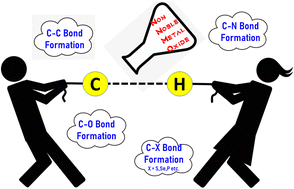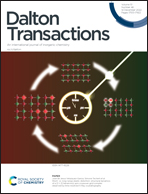Recent advances in non-noble metal-based oxide materials as heterogeneous catalysts for C–H activation
Abstract
As the world moves towards a more sustainable future, it is desirable to replace the homogeneous catalytic processes and conventional industrial processes with energy-efficient, cost-effective, and greener heterogeneous processes. In heterogeneous catalysis, non-noble metal-based oxide catalysts have been gaining traction recently, as they are affordable, highly stable, and thus appealing for different industrial uses. C–H activation is crucial to numerous organic reactions such as hydrogenation, oxidation, reduction, oxidative coupling, substitution, and C–C coupling. However, it is a challenging task due to its high bond energy and high kinetic barrier of C−H bond cleavage, making it inert in most conventional processes, thereby requiring efficient catalysts. In recent years, non-noble metal-based oxides have made a huge difference in the reactivity of the C–H bond through their tailored surface area, surface charge, redox properties, and oxygen vacancies. In this perspective article, we discuss the application of nanostructured non-noble metal oxides with tailored surface properties through nano-structuring, doping, vacancy creation, and heterostructure formation in reactions involving C–H activation as the key step. Specifically, we focus on the essential surface properties of catalysts that play a major role in the C–H activation reaction for sustainable industrial applications.

- This article is part of the themed collection: 2022 Frontier and Perspective articles


 Please wait while we load your content...
Please wait while we load your content...